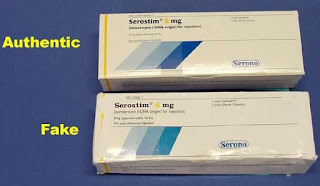By: Brandon M. Macsata, CEO, ADAP Advocacy Association
In the waning days of the Trump Administration, Medicare Part D once again faced a serious threat. The Centers for Medicare & Medicaid Services (CMS) had authorized a potentially harmful demonstration project, which would have limited patient access to medications covered by the six protected classes (6PC) policy. The 6PC demonstration project would have proved disastrous for patients living with chronic health conditions, such as HIV/AIDS. Fortunately, President Joseph R. Biden Jr. pumped the brakes on the proposed changes.
 |
| Photo Source: The Associate Press |
In Medicare Part D, 6PC protects vulnerable seniors and low-income beneficiaries with serious and complex health conditions, while also allowing Part D insurance plans to use the tools they need to control costs. Medicines for some of the sickest patients in Part D are covered within the six protected classes, including those for cancer, epilepsy, HIV/AIDS and mental illness. Many of these conditions require patients to attempt a variety of therapies before they and their doctor settle on the most appropriate treatment, so there is no one-size fits all medicine for these conditions.[1]
Healthcare decisions for complex health conditions should be left to patients, and their doctors. For people living with HIV/AIDS, numerous factors come into play when determining the appropriate highly active anti-retroviral therapy (HAART). And now with the advent of injectable HIV therapy, such decisions take-on an entirely new dimension.
Earlier this year, HealthHIV's Executive Director Brian Hujdich spelled out the importance of the Medicare Part D's 6PC for the HIV-positive community: "Those medications are protected for good cause. About 25 percent of people living with HIV in the United States depend on Medicare for their antiretrovirals, care, and preventative services. These patients often require very tailored treatment regimens."[2]
The insurance industry welcomed the proposed changes, but otherwise the 6PC demonstration project was universally condemned by the pharmaceutical industry, patient advocacy groups, and numerous powerful trade associations. Said Guy Anthony: “I’m deeply concerned as someone living with HIV and Bi-polar disorder. Insurers would be allowed to institute new prior authorization or step therapy requirements – or ‘fail first’ – as community advocates commonly call it. Let’s be clear, no patient should fail before being afforded life-saving treatment.”
The latest 6PC demonstration project wasn't the first time that the Trump Administration had attempted to weaken Medicare Part D. In the end, however, patients won the day! There is an inherent value in advocacy partnerships...AGAIN!
 |
| Photo Source: Partnership for Part D Access |
The effort to fight the proposed changes to Medicare’s six protected classes policy was spearheaded by the Partnership for Part D Access, which is a broad coalition of healthcare stakeholders working to ensure that Medicare continues to provide beneficiaries with access to vital medications. The ADAP Advocacy Association actively fought against the proposed changes.
“Medicare beneficiaries with the most complex, chronic conditions are breathing a sigh of relief,” said Chuck Ingoglia, President and CEO of the National Council for Behavioral Health, who serves as Executive Director of the Partnership for Part D Access. “The Biden administration’s decision demonstrates the need to maintain the six protected classes policy as an essential patient safeguard in Medicare Part D.”[3]
According to the Partnership for Part D Access,[4] it was stakeholder mobilization against the 6PC demonstration project that led to it being halted by the Biden Administration. Advocacy efforts included:
- 67 bipartisan Members of Congress signed a letter to HHS and CMS urging them to withdraw the proposal;
- several thousand patients from across the country wrote letters to the CMS comment portal;
- over 130 individual patient groups joined a letter to HHS Secretary-designate Xavier Becerra;
- nine leading pharmacy stakeholder groups penned a letter to the Acting CMMI Director Amy Bassano;
- the Center for Medicare Advocacy and Medicare Rights Center sent a letter to Acting HHS Secretary Norris Cochrane; and
- a group of 30 leading HIV groups sent a letter to HHS Secretary-designate Becerra.
Although the Biden Administration is widely viewed more favorably by the patient advocacy community, now is not the time for the HIV community to let down its guard. Much more work needs to be done to reverse other harmful policies enacted by the Trump Administration, such as drug importation and co-pay accumulator programs.
Disclaimer: Guest blogs do not necessarily reflect the views of the ADAP Advocacy Association, but rather they provide a neutral platform whereby the author serves to promote open, honest discussion about public health-related issues and updates.
[1] Johnson, Juliet (2019, January 31). New Research Shows Changes to the Six Protected Classes Would Harm Most Vulnerable Patients and Are Unnecessary. ADAP Blog. Retrieved online at https://adapadvocacyassociation.blogspot.com/2019/01/new-research-shows-changes-to-six.html.
[2] Hujdich, Brian (2021, February 26). President Biden must rescind a last-minute Trump rule that could leave people with HIV on the hook for thousands in prescription costs. HIV Plus Magazine. Retrieved online at https://www.hivplusmag.com/opinion/2021/2/26/trumps-parting-shot-hiv-patients.
[3] The Partnership for Part D Access (2021, March 16). Patient Advocates Applaud Biden Administration for Maintaining Medicare's Six Protected Classes Policy. Retrieved online at http://www.partdpartnership.org/newsroom/patient-advocates-applaud-biden-administration-for-maintaining-medicares-six-protected-classes-policy.
[4] The Partnership for Part D Access (2021, March 16). Patient Advocates Applaud Biden Administration for Maintaining Medicare's Six Protected Classes Policy. Retrieved online at http://www.partdpartnership.org/newsroom/patient-advocates-applaud-biden-administration-for-maintaining-medicares-six-protected-classes-policy.








